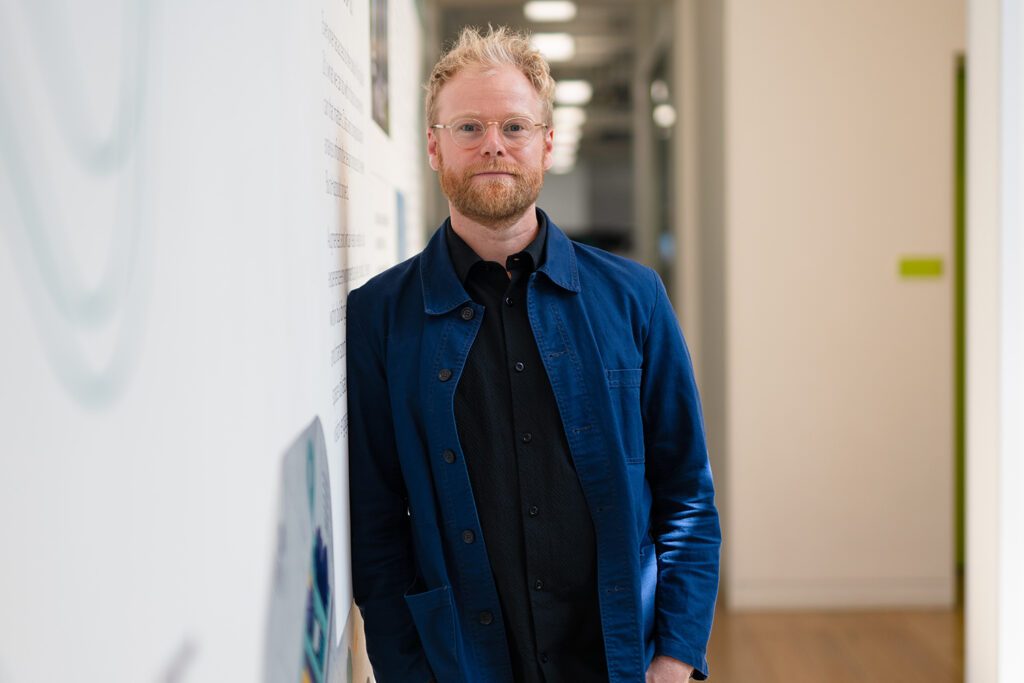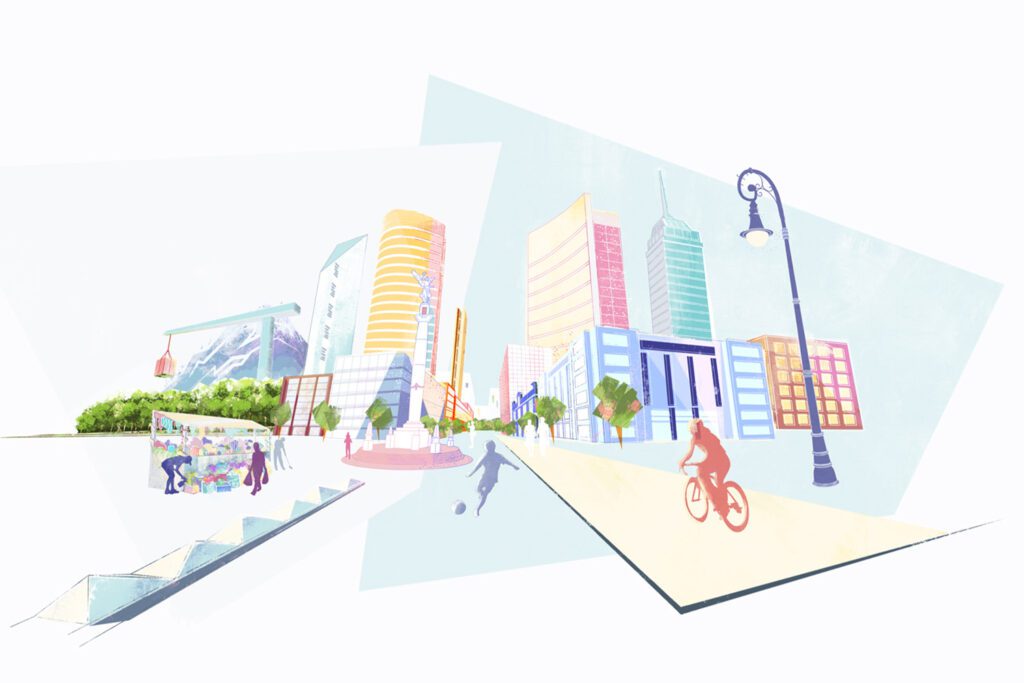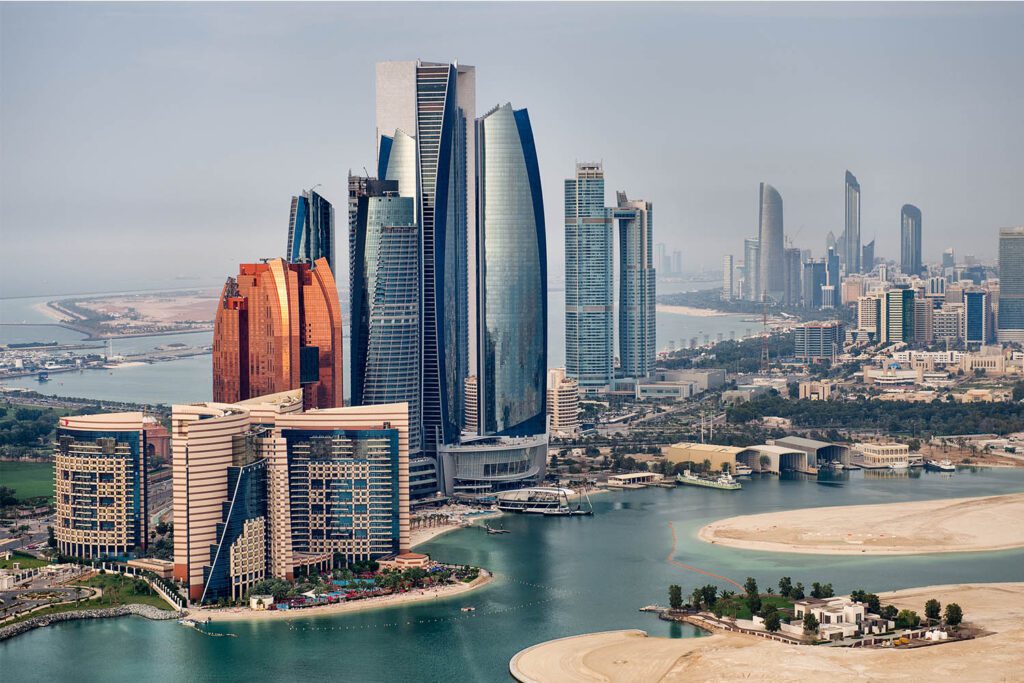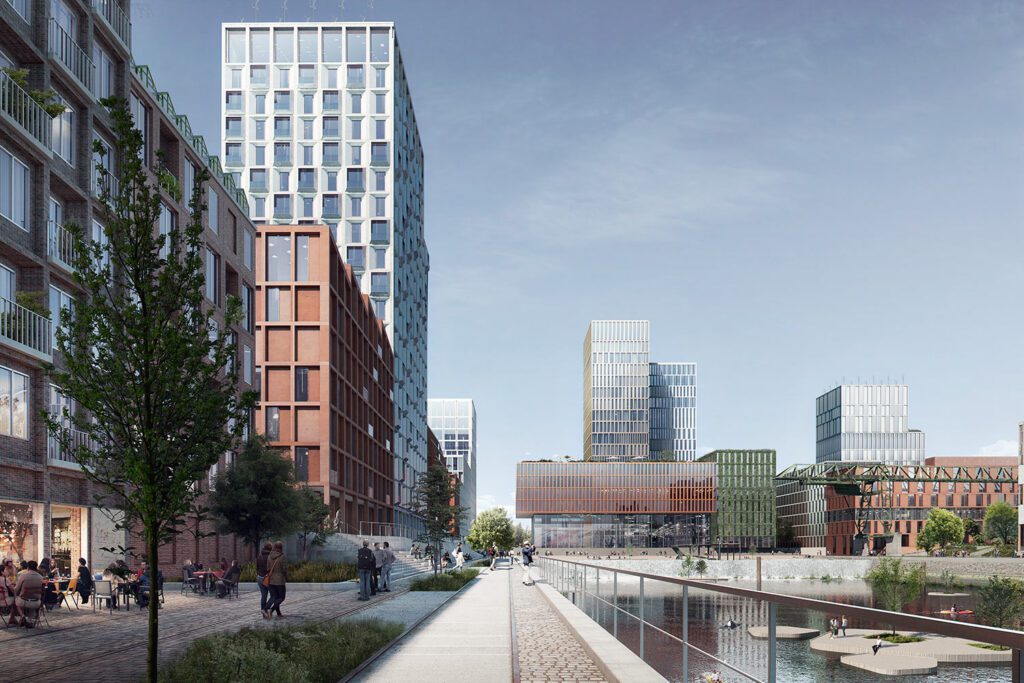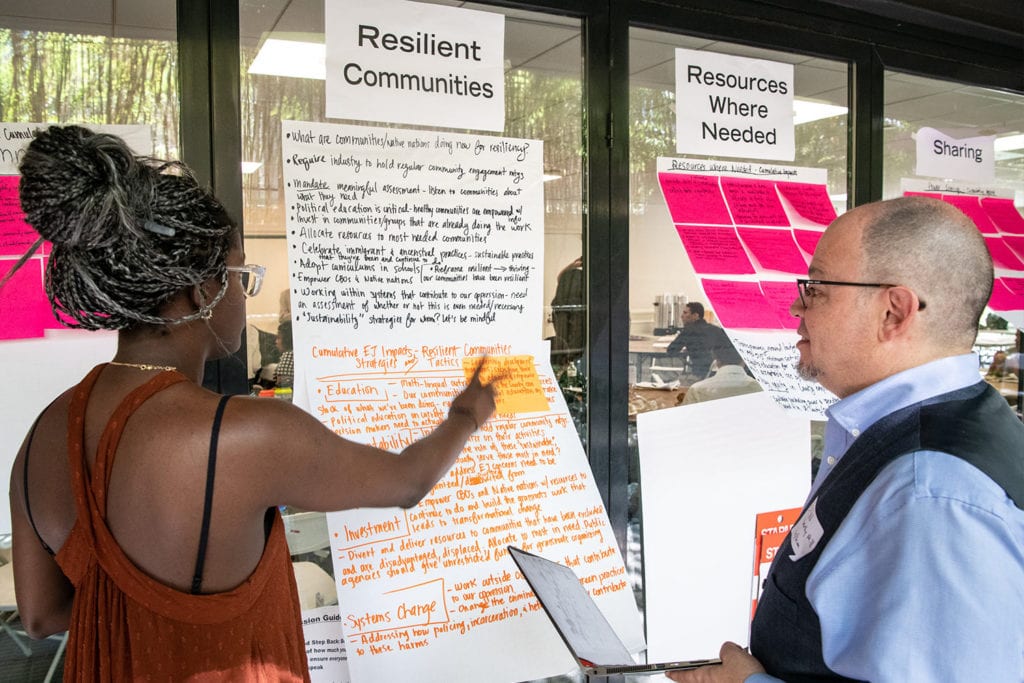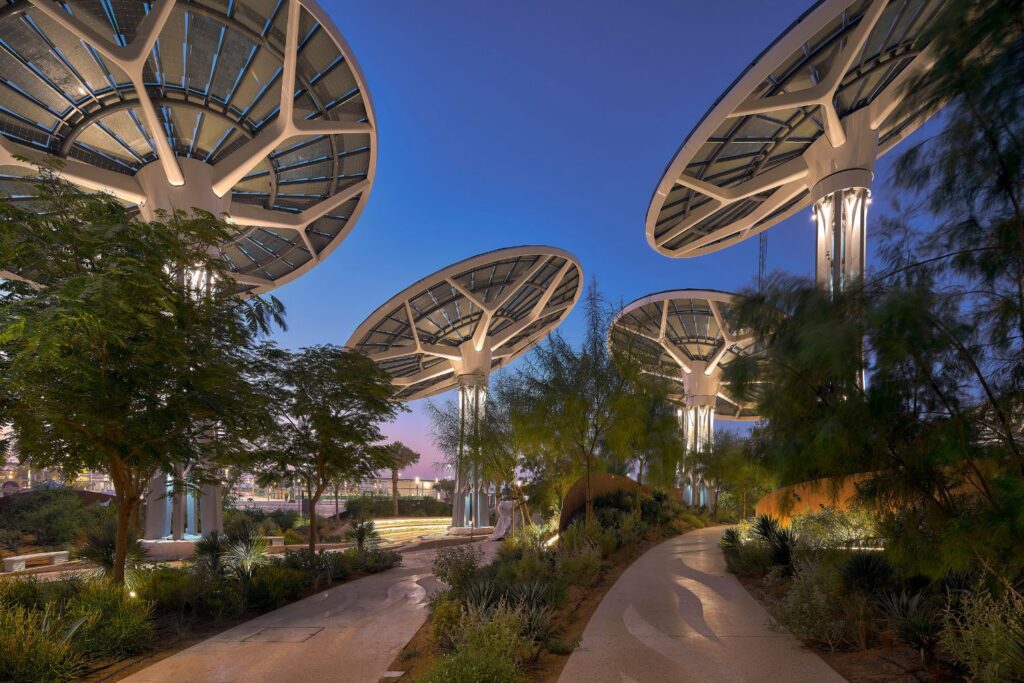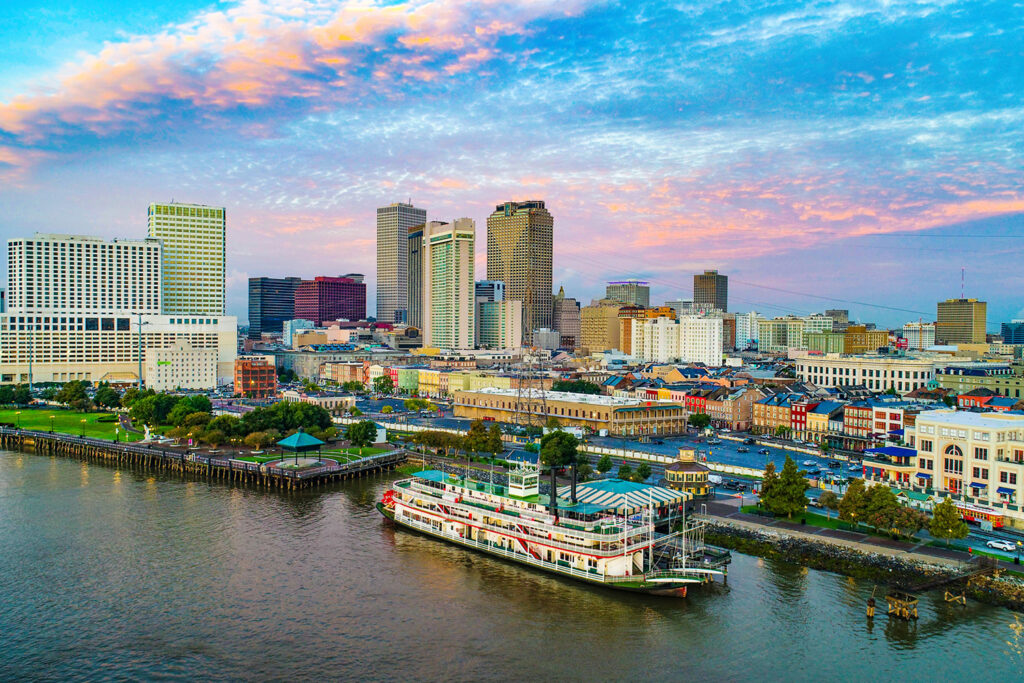Milan transitions to Clean Construction
Buro Happold and C40 Cities have launched the third report in a series of Clean Construction deep dives. These reports support cities in resourcing efficient, net zero construction to deliver healthy, resilient and thriving urban communities.
The engineering, architecture and construction industry has a huge role to play in bringing about positive social, economic and environmental change. Almost 40% of global energy-related greenhouse gas emissions are attributable to buildings and construction.
The built environment is therefore critical to addressing the climate and biodiversity emergency. We must unite as a sector to drive change. Failure to reduce the impact of construction in our cities poses a serious risk to the environment.
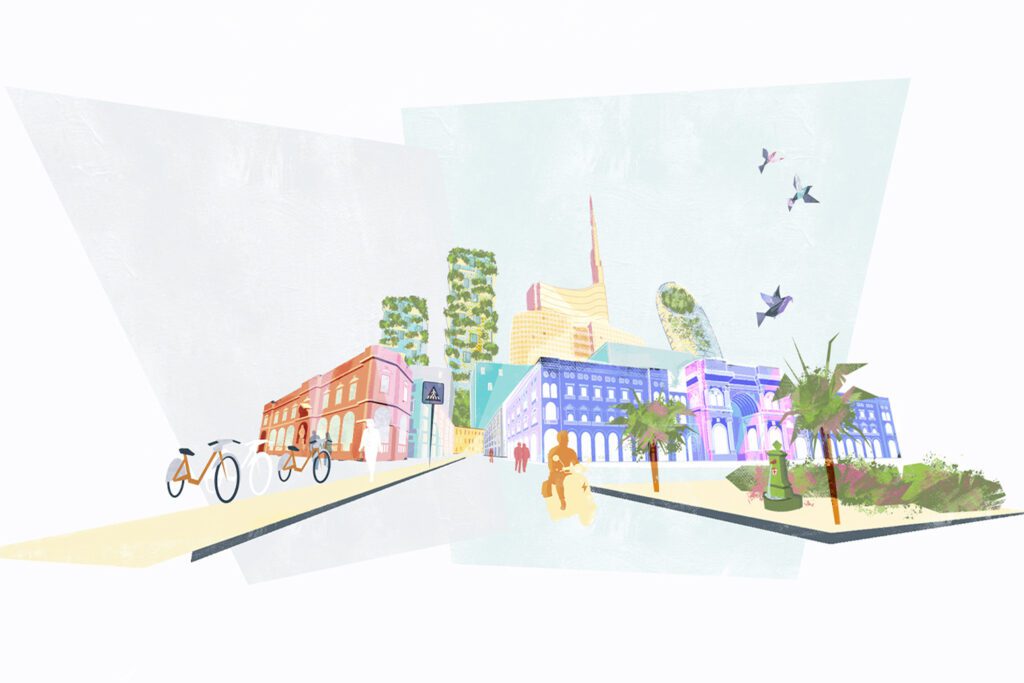
Clean Construction in our cities
As a result, C40 Cities launched its global Clean Construction Programme in 2019. The programme supports cities to mitigate the impact of construction, strengthen resilience to climate risks, and facilitate dialogue within the industry.
A series of deep dives into six cities around the world — developed in partnership with Buro Happold — take this one step further. The reports provide local, actionable advice to help city leaders make the case for Clean Construction. They also offer guidance for other cities around the world. The Milan deep dive is the third report in the series.
A green and equitable future for Milan
Milan has demonstrated significant progress and leadership in its approach to tackling climate change. The city has endorsed multiple C40 commitments. Most notably, the Mayor of Milan chairs the C40 Global Mayors Covid-19 Recovery Task Force on a Green and Just Recovery.
Moreover, the Milan Air Quality and Climate Plan 2 outlines a number of bold climate commitments, including making Milan carbon neutral by 2050. Many of the adopted actions to reach these targets support the principles of clean construction.
Milan will greatly benefit from this report, as it provides a comprehensive picture of the state of the art, highlighting challenges and opportunities to develop local clean construction policies and actions. They will complement and support Milan’s Air Quality and Climate Plan in the decarbonisation process of the city, also contributing to reducing resource use, increasing resilience of new construction, creating green good jobs, and improving citizens’ health and wellbeing.
Giuseppe Sala, Mayor of Milan
Transitioning to Clean Construction
Milan has grown significantly in recent years. This has resulted in the creation of new buildings and critical infrastructure projects, although Milan also has a wealth of historic buildings that are highly valued by the city and many of its citizens.
There has been a significant focus on energy-efficiency standards in new and existing buildings. These requirements have been embedded in the local building code and urban planning regulations. Overall, the city has supported the roll out of multiple energy retrofit programmes.
However, Milan still faces a range of challenges. For example, there is an aging building stock that requires constant maintenance, as well as high levels of fuel poverty, poor air quality and vulnerability due to climate extremes, notably heat and flooding.
Nonetheless, Milan’s legacy of managing dense urban sprawl and heritage buildings, a history of research and flagship projects, and early experience driving retrofits and material recovery. Combined with the city’s powers, this puts Milan in a strong position to implement a variety of ambitious clean construction measures.

How does Clean Construction support Milan?
Implementing policies that reduce carbon emissions from both building and infrastructure construction can support many social and environmental co-benefits, not just locally but also on a global scale.
The localised benefits of Clean Construction include:
- Supporting the creation of green jobs and skills
- Increased climate resilience
- Promoting citizen participation and community cohesion
- Creating affordable, high-quality and accessible housing
- Mitigating risks to physical and mental health
- Increasing the attractiveness and appearance of the city
- The sustainable management of public budgets
- Supporting improvements in economic and labour productivity
- Protecting cultural heritage and increase the diversity of cultural activities for citizens
- Protecting and enhancing of water quality, air quality, biodiversity and soil quality
- Reduced noise pollution.
The global benefits of Clean Construction include:
- Driving economic innovation, dynamism and competitiveness
- Fostering inclusive, just and transparent governance
- Encouraging sustainable production and consumption practices
- Increasing citizen awareness of environmental and health issues
- Mitigating greenhouse gases and emissions.
If we are to keep raw materials and fossil fuels in the ground, maintaining, adapting and making full use of the structures we already have must be prioritised. It has been inspiring to learn about the ways in which cities like Milan can reimagine, preserve and reinvigorate their existing buildings. Through clean construction we can transform our urban spaces, to benefit both the environment and those who live in it.
Fergus Anderson, Sustainability and Environment Associate at Buro Happold
A sustainable future for our cities, communities and planet
All these positive outcomes are inextricably linked. In order to address the need for greater social and environmental justice, cities have a critical role to play in spearheading the vision and leadership needed to facilitate this transition.
The proposed Clean Construction policies for Milan will be applicable, to varying degrees, to all cities around the world. Milan is embedding Clean Construction requirements in public projects to stimulate the market and secure a sustainable, equitable economy.
Buro Happold and C40 are working with five other cities around the world to make the case for Clean Construction. This work forms part of the C40 Clean Construction Declaration. These cities have committed to reducing the embodied emissions associated with the construction of buildings and infrastructure by 50% by 2030.
More information about Clean Construction can be found on the C40 Knowledge Hub.
Download the report


